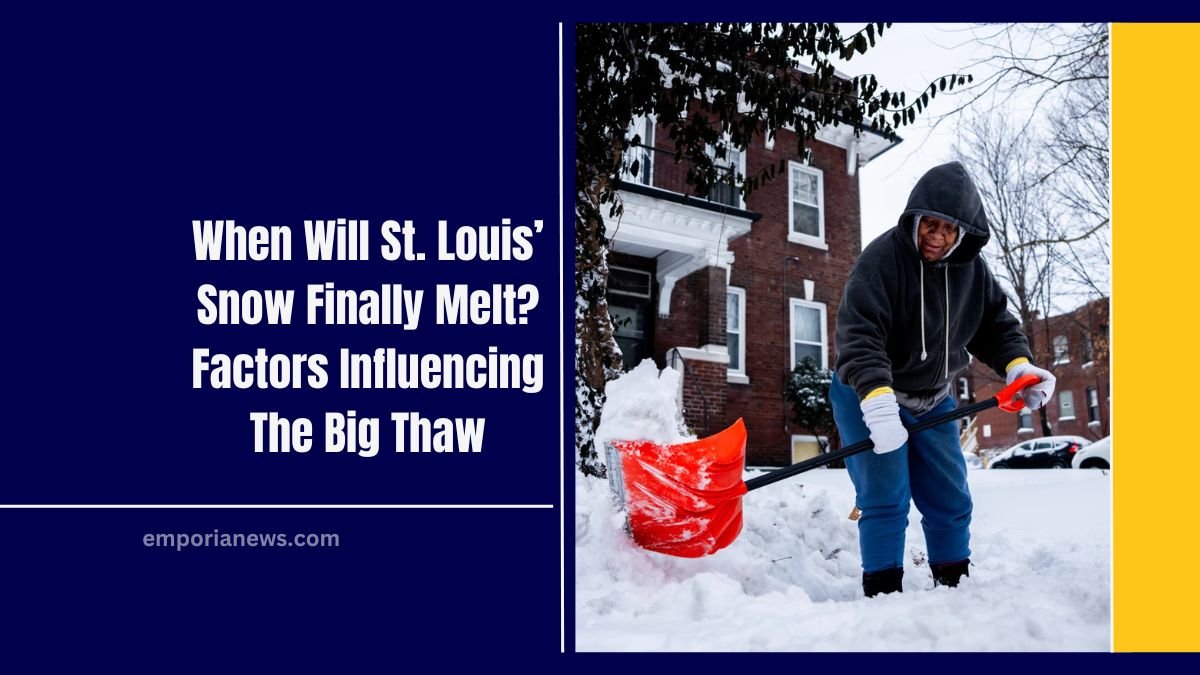St. Louis has recently experienced its largest snowstorm in years, leaving residents wondering: when will the snow finally melt? With roads still partially covered and snowbanks piling high, it seems the city is locked in a winter wonderland for the foreseeable future.
Let’s explore the factors that influence snow melting, upcoming weather conditions, and what residents can expect in the coming days.
Key Factors Affecting Snow Melting in St. Louis
Several natural processes determine how quickly snow will melt. These include temperature, sunlight exposure, and atmospheric conditions.
- Temperature Fluctuations
For snow to melt significantly, temperatures need to rise above freezing (32°F). St. Louis is expected to experience some mild temperatures in the coming days, peaking around 34°F on Thursday and Friday. However, these brief warm-ups may not be enough to substantially reduce snow levels. - Ground Heating
Even during subfreezing conditions, extended periods of sunlight can warm the ground, particularly asphalt and other dark surfaces. This heating effect can cause localized melting, especially in areas with direct sunlight exposure. - Sublimation
Sublimation occurs when snow transitions directly from a solid to a gas without melting into water first. This process is accelerated by sunny, windy, and dry conditions, which are expected to play a role in reducing snow coverage. - Cloud Cover and Sunlight
Cloudy days can delay melting by blocking direct sunlight, while clear skies allow the sun’s rays to penetrate and warm the snowpack. Daytime cloud cover will be a key factor in how quickly snow melts in the St. Louis area.
Upcoming Weather in St. Louis
The forecast for the next week offers a mixed bag of mild warm-ups and potential snowfall. Here’s what residents can expect:
| Day | High Temperature | Snow Impact |
|---|---|---|
| Thursday | 34°F | Slight melting possible |
| Friday | 34°F | New light snow in the forecast |
| Saturday | 35°F | Limited melting during the day |
| Sunday | 36°F | Snow showers may return |
| Next Week | Low-to-mid 30s | Gradual melting, cloudy skies |
While daytime highs will briefly rise above freezing, the lingering snowpack will act as a coolant, keeping the surrounding air colder and slowing the melting process.
How New Snowfall Complicates the Melt
Additional snowstorms predicted for Friday and Sunday could prolong the melting timeline. Lighter snow layers can insulate denser snow below, trapping cold air and preventing the underlying layers from melting.
Moreover, the added snow increases the total volume that must eventually melt, extending the timeline for snow removal.
Techniques Nature Uses to Melt Snow
- Wind and Dry Air
Wind removes saturated air near the snow surface, allowing dry air to absorb water vapor from the snow. This accelerates sublimation and contributes to overall snow reduction. - Sunlight Absorption
Lighter snow may absorb more sunlight, helping to melt the denser snow underneath. - Gradual Temperature Increase
Sustained temperatures above freezing, even by a few degrees, can melt snow steadily over time.
Challenges for St. Louis Residents
The lingering snow presents challenges for road safety, parking, and daily activities. Residents are encouraged to:
- Clear driveways and sidewalks early during brief warm-ups to prevent ice build-up.
- Monitor local forecasts for updates on additional snowfall.
- Drive cautiously, as partially melted snow can refreeze overnight, creating hazardous black ice.
St. Louis residents may need to remain patient as nature takes its course. With a mix of mild temperatures, potential snowfall, and slow natural processes, the snow is unlikely to disappear quickly.
Understanding the factors at play can help residents prepare and adapt until warmer days arrive. For now, keeping an eye on the forecast and taking proactive steps during warm spells can make navigating this snowy season a bit easier.
FAQs
When will the snow fully melt in St. Louis?
With temperatures barely exceeding 32°F and additional snowstorms forecasted, it may take up to two weeks or longer for the snow to fully disappear, depending on weather conditions.
Will more snow delay the melting process?
Yes, additional snowfall can insulate the existing snowpack, slowing the melting process and prolonging snow cover.
How can sunlight help accelerate melting?
Sunlight warms the ground and snow surface, especially on clear days. This can aid in both direct melting and sublimation.




